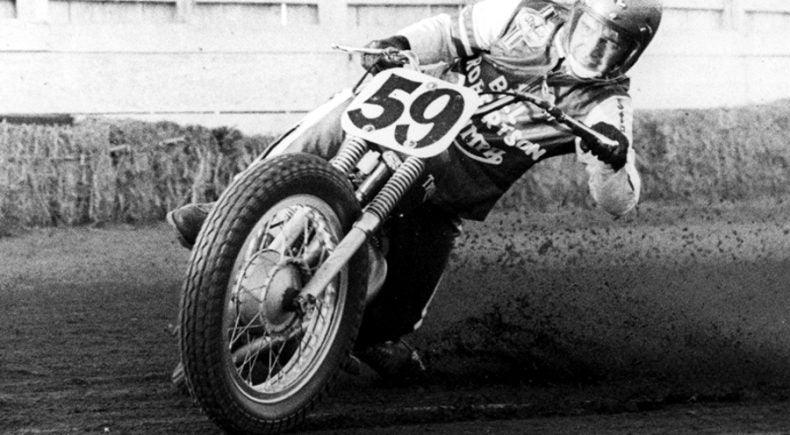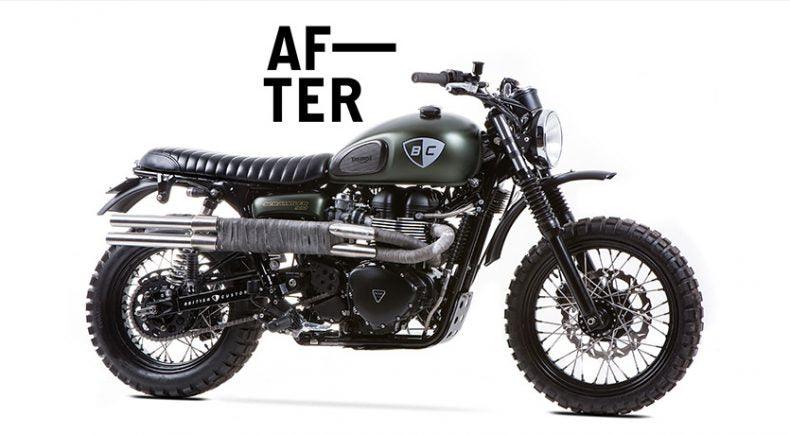
Flat track is awesome not just because it’s all about going fast and turning left, but because of the community that embraces the sport. While everybody loves to win, local flat track races are mostly just about getting out there, getting dirty, and having fun.
That’s why they created hooligan races, so anyone can “run what ya brung.” While by that definition you can literally race your bike however it’s set up, you can very easily give yourself an edge by making a few small adjustments, installing a few new parts, and pulling off some things you don’t need. And we’ll tell you how to do it all on your own in your garage. And who knows, it may be so much fun you decide to build a full-blown tracker.


Trackers are the original dirt track racing motorcycles, and were ridden by such legends as Eddie Mulder, Sonny Nutter, and Gary Nixon among scores of others back in the good ol’ days. They were made by stripping down and modifying street bikes rolled off the local dealer’s showroom floor, the same way you can with your bike and a quick weekend project. If you’re trying to build a tracker on a budget, all you need are three basic parts to get the right look, feel, and sound: a seat, handlebars, and exhaust.
Trackers were primarily made for racing, so the first thing you have to do is pull off anything you don’t need to shed some weight and free up some horsepower. Some quick and easy things include the front and rear fenders, the antenna mirrors, and side covers. Then, you should slap on a slammer seat that will let you quickly move your weight forward and back, some upright bars to help you keep everything under control when you’re getting squirrelly, and some exhaust pipes to increase your horsepower and get that iconic tracker sound. With those three parts, you have the essentials for a tracker.
If you want to take it a step further, you can upgrade your wheels and tires to get one of the most defining aspects of the style.
If you like it so much you want to keep adding to the bike to make it a full-on tracker, read our Tracker Style Guide for a complete list of parts, or check out the custom trackers we built with racing legends like the Triumphant with Eddie Mulder, The Nutterized Tracker with Sonny Nutter, and the Tracker Classic with Richard Pollock of Mule Motorcycles for inspiration.
TRACKER SEATS
TRACKER BARS
Those are both very quick and easy to install weekend projects that will help you immensely while you’re hot shoeing it.
If you aren’t afraid of a little grease, then you can pull off whatever unnecessary parts you don’t mind putting back on later. These include the mirrors, headlight, turn signals, both fenders, and whatever else the guv’ment says you need for the street but that won’t help you on a dirt track. This step isn’t necessary, but will lighten your load and free up some horsepower.
The last step is pretty critical: setting your suspension. If your stock front and/or rear suspension can be adjusted, it is highly recommended that you set it for the dirt. The nice cushy settings it comes with out of the factory that make it lavish to ride on the street will turn your bike into a pogo stick when you’re on the dirt and coming into a turn hot. This can be done by a mechanic for usually about $20 (it takes about 15 minutes), or by yourself with a flat head screwdriver and a suspension tool (it still takes about 15 minutes to do it yourself). Even though this only requires turning a wrench and a screwdriver, we recommend asking your mechanic, friends who race, or watching videos about how to do this correctly. First, you’ll want to set the sag in your rear suspension to 25-30 mm. This can be done with a suspension tool, and is most easily done with a friend who can measure how much the bike lowers when you sit on it versus when no one is on the bike. With your sag adjusted, you’ll want to set the damping (compression and rebound) on both your front and rear shocks. For racing, you want your shocks to be stiff so that the suspension sticks through the turns, giving you the most control, instead of bouncing around while you’re trying to hold a line. Typically, both damping settings should be put at all but a few clicks out. This can be done with a flat head screwdriver. The main idea is that if you push straight down on the bike as hard as you can to test the suspension, the front and rear of the bike should go down and then back up at the same speed, and it should not bounce up and down after it comes back up immediately after the test push. After the race, be sure to reset or adjust your suspension for the street, because your bike will be very uncomfortable once you get back out on the road.
While anyone can throw a leg over any bike and have a great time in a hooligan race, it definitely doesn’t hurt to take a weekend afternoon to get your bike set up for the dirt. Trust us, we speak from experience.










Leave a comment
All comments are moderated before being published.
This site is protected by hCaptcha and the hCaptcha Privacy Policy and Terms of Service apply.